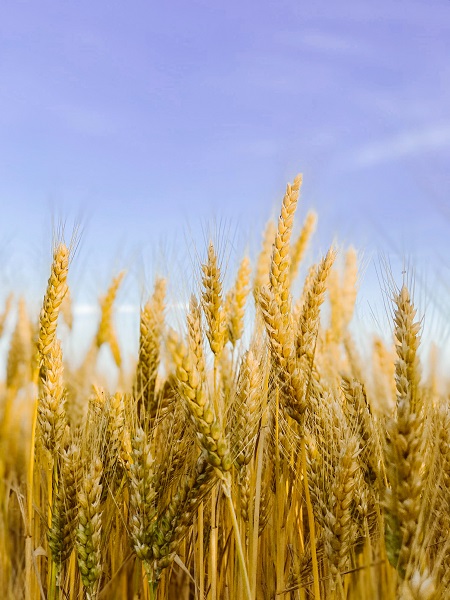
If you grew up in Dutchtown, you probably know something about Congregationalism. If you had been around in 1895, you might have read a poem called Pike’s Peak in the July 4 edition of The Congregationalist. The poem was written by Katharine Lee Bates, born in Falmouth, Massachusetts, the daughter of the town’s Congregational minister, William Bates.
You may not believe you’ve heard the poem, but you have. It started with the words, “O great for halcyon skies.” Sound familiar? Maybe not. That first line was amended in 1904, beginning with the words, “O beautiful for spacious skies, for amber waves of grain.” Even as a young child, I could understand spacious skies, but I also knew all about amber waves of grain long before I connected them with the song.
Across the street from my childhood home was a large wheat field. As the wheat matured, it turned from green to a tan color. If you had any windstorm, the wheat would blow and look like waves on water. I was fascinated by it. I remember walking out into the field and pulling off a few wheat kernels. To me, it didn’t really have any taste. I can also remember thinking it was very little food from such a tall plant. But when harvest time came, the wheat poured from the combine into wheat sacks. The combine worker was busy keeping bags attached, sealing them with a wire, and sliding them off when full. The field would be littered with sacks full of wheat. After the wheat was gone, the wheat straw was baled, loaded up, and sold. It seems like I remember people saying the straw was worth almost as much as the wheat.
As I got older, the wheat was gone, and soybeans took over. I would see those amber waves of grain again, though. One year, I attended my first Congregationalist (NACCC) church conference in Wichita, Kansas. The wheat fields there were much larger than anything I had seen here. Instead of being a tan exception to the green landscape, they were the landscape for miles and miles.
I was reminded of these a couple of weeks ago when Cheryl and I went to a 5K running race. Between Barnesville and Musella, there were a few large fields with that tan color. The wheat, or whatever grain had been there, was gone, but that tan color was still there.
It reminded me of two things. The first is that farmers are still out there supplying the nation with food. There just aren’t that many of them anymore. Two hundred years ago, 72% of the people were farmers. One hundred years ago, that number had dropped to 30%. Today, that number is down to 1.3% of the employed population. The second thing is there is beauty in farming. Maybe it’s the amber waves of grain, a peach orchard in Musella, or maybe it’s as simple as a vine-ripe tomato in your backyard. I hope that whenever you hear those words of Ms. Katharine Lee Bates, you’ll be reminded too.